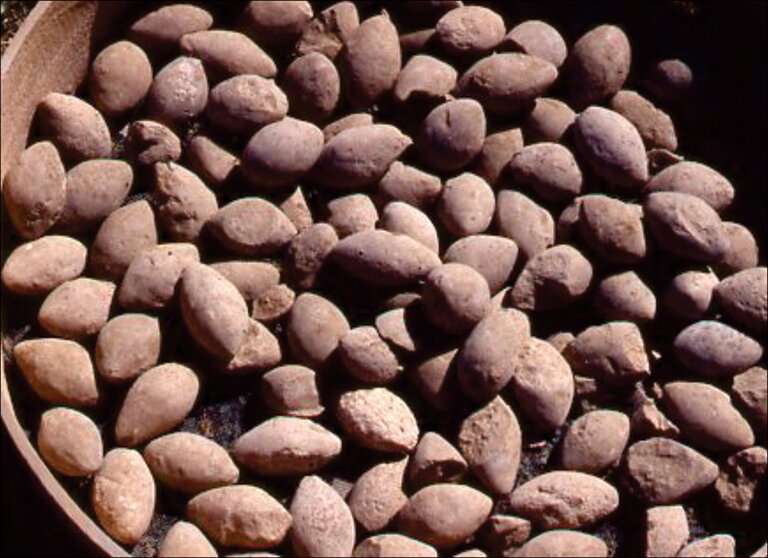Biconical pellets from Tell Banat North (figure courtesy of the Euphrates Salvage Project). Credit: Antiquity (2021). DOI: 10.15184/aqy.2021.58
A team of researchers from the University of Toronto, the Euphrates Salvage Project and the University Museum of Archaeology and Anthropology has found evidence that suggests the White Monument in Syria could be the oldest known war memorial. In their paper published in Cambridge University Press's, Antiquity, the group describes their study of material found in the earth mound before it disappeared beneath the water when the area was permanently flooded due to construction of the Tishrin Dam.
Back in the 1980s and 1990s, archeologists were allowed to excavate the White Monument, located near the Euphrates River in Syria—prior to flooding. In so doing, they found evidence of approximately 30 bodies buried thousands of years ago along with other artifacts. In this new effort, the researchers took a new look at what had been found in the monument and found patterns that had not been noticed before.
By studying data from the prior digs, the researchers were able to build a history for the monument. They found that it had been built in three stages—the first had involved creating a small mound out of dirt; the second involved covering the initial mound with smaller dirt mounds with human bones mixed into it. The third stage was more complex—workers added more dirt and then created stepped platforms, giving the finished mound a shape somewhat similar to a pyramid. During excavation, the archeologists had only been able to study the top two layers, and because of that it is still not known if there were any bones or artifacts in the original small mound. Testing showed initial construction of the monument had begun approximately 4,500 years ago.
In looking at the arrangement of the bones and other artifacts in the monument, the researchers found there were some patterns—clusters of bones were paired with certain artifacts. Some groups, for example, were paired with collections of pellets (ammunition for slingshots). Other clusters were made up of human bones placed near bones from donkey-like animals (paintings of the time showed they were used to pull carts or chariots.)
Taken together, the researchers suggest the mound had been created by the Mesopotamian people to serve as a large war memorial, though it was not clear if those interred were friends or foes.
More information: Anne Porter et al, "Their corpses will reach the base of heaven": a third-millennium BC war memorial in northern Mesopotamia?, Antiquity (2021). DOI: 10.15184/aqy.2021.58
Journal information: Antiquity
© 2021 Science X Network
























